Experimental Study on the Flow Boiling Heat Transfer Characteristics in a Mini-Channel with Offset Fins †
Abstract
1. Introduction
2. Description of the Experimental System and Data Reduction
2.1. Experimental System
2.2. Experimental System
2.3. Experimental System
3. Experimental Results and Discussion
3.1. Effect of Saturation Pressure on the Heat Transfer
3.2. Effect of Mass Flux on the Heat Transfer
3.3. Effect of Heat Flux on the Heat Transfer
4. Conclusions
Author Contributions
Acknowledgments
Conflicts of Interest
References
- In, S.; Jeong, S. Flow boiling heat transfer characteristics of R123 and R134a in a micro-channel. Int. J. Multiph. Flow 2009, 35, 987–1000. [Google Scholar] [CrossRef]
- Saitoh, S.; Daiguji, H.; Hihara, E. Effect of tube diameter on boiling heat transfer of R-134a in horizontal small-diameter tubes. Int. J. Heat Mass Trans. 2005, 48, 4973–4984. [Google Scholar] [CrossRef]
- Wen, T.; Zhan, H.; Lu, L.; Zhang, D. Experimental investigation and development of new correlation for flow boiling heat transfer in mini-channel. Int. J. Therm. Sci. 2018, 129, 209–217. [Google Scholar] [CrossRef]
- Kim, B.; Sohn, B. An experimental study of flow boiling in a rectangular channel with offset strip fins. Int. J. Heat Fluid Flow 2006, 27, 514–521. [Google Scholar] [CrossRef]
- Pulvirenti, B.; Matalone, A.; Barucca, U. Boiling heat transfer in narrow channels with offset strip fins: Application to electronic chipsets cooling. Appl. Therm. Eng. 2010, 30, 2138–2145. [Google Scholar] [CrossRef][Green Version]
- Raju, M.A.; Babu, T.A.; Ranganayakulu, C. Flow boiling heat transfer and pressure drop analysis of R134a in a brazed heat exchanger with offset strip fins. Heat Mass Trans. 2017, 53, 3167–3180. [Google Scholar] [CrossRef]
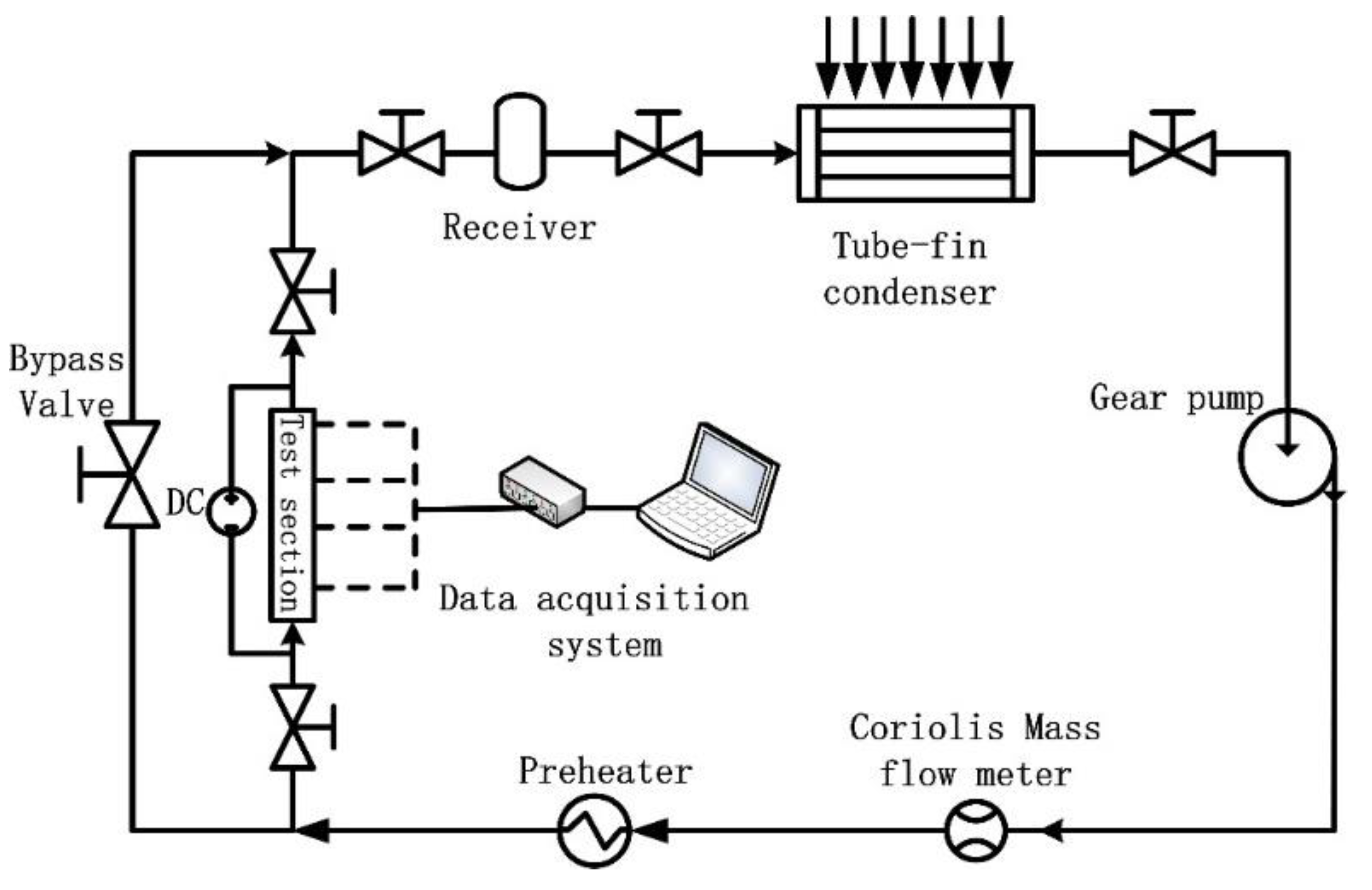
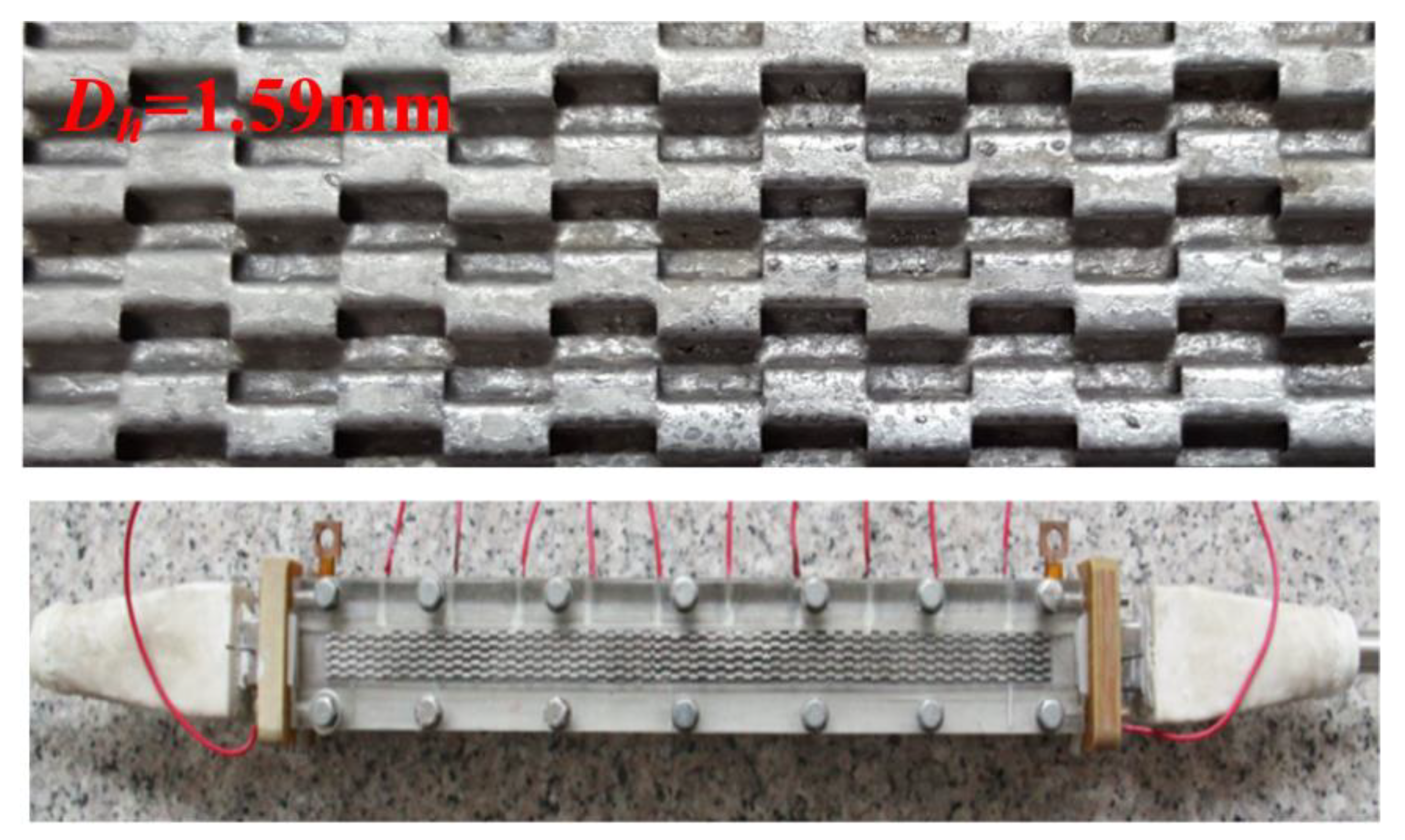
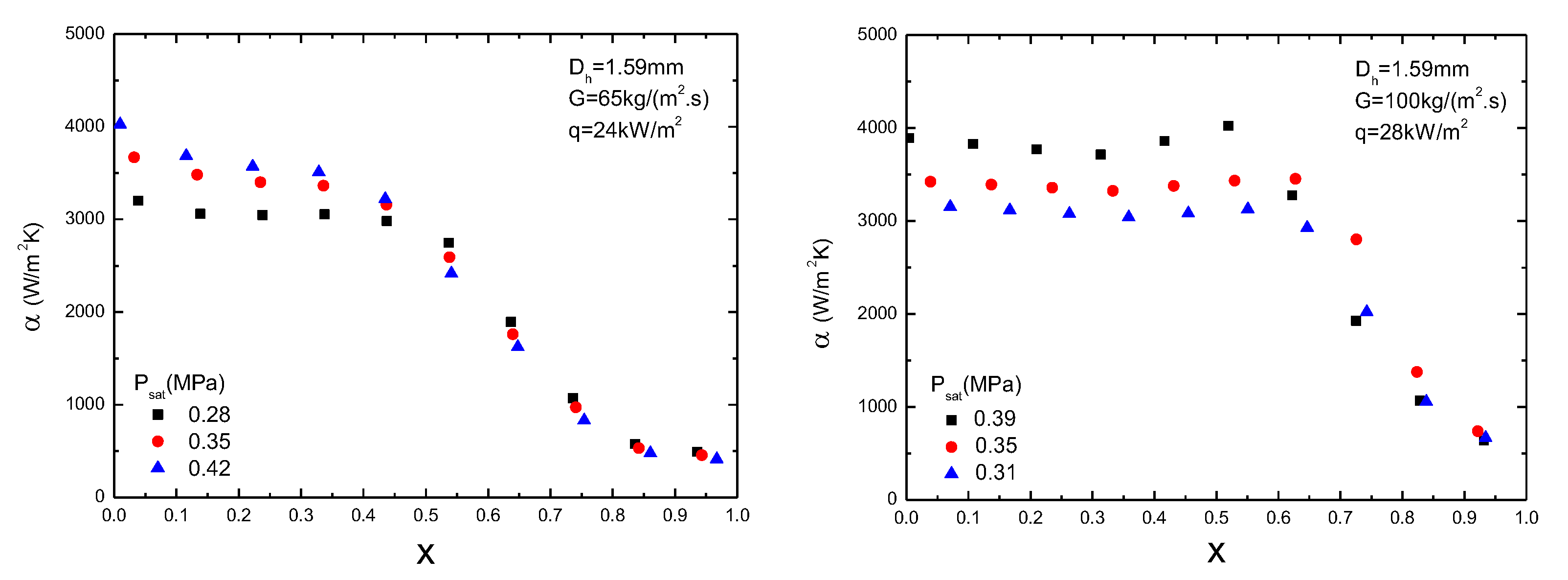
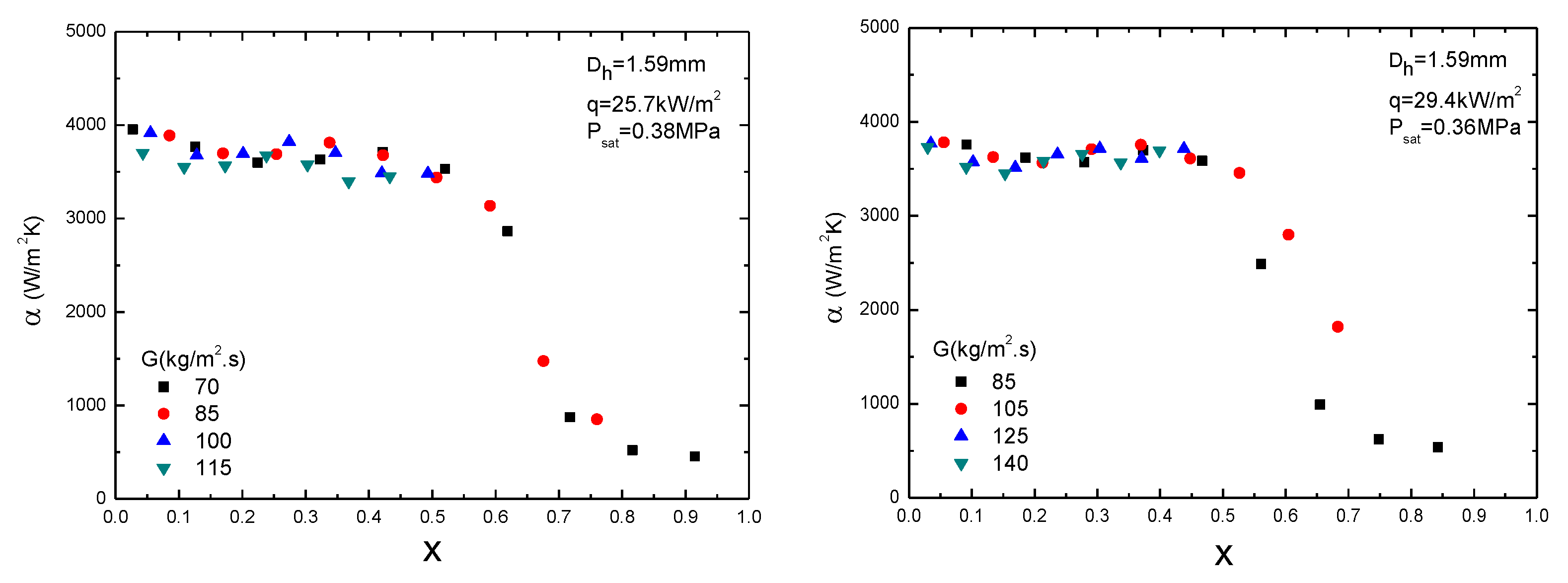
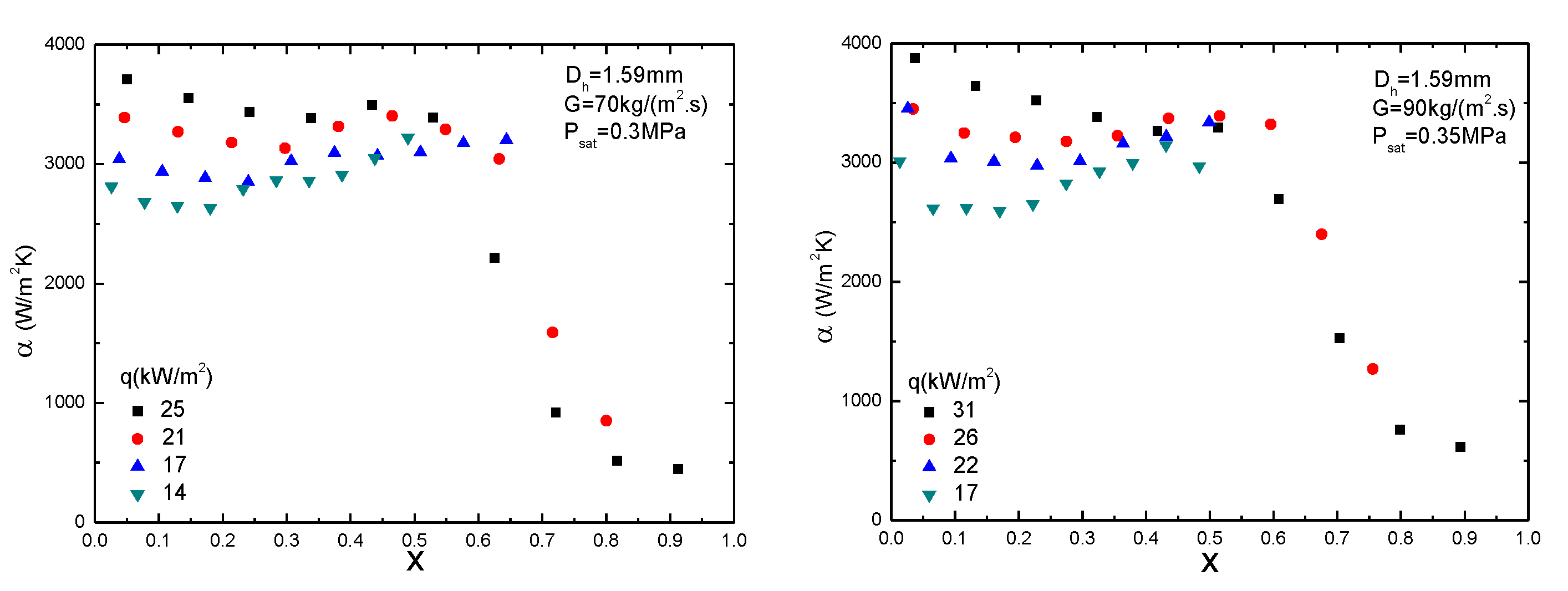
Publisher’s Note: MDPI stays neutral with regard to jurisdictional claims in published maps and institutional affiliations. |
© 2018 by the authors. Licensee MDPI, Basel, Switzerland. This article is an open access article distributed under the terms and conditions of the Creative Commons Attribution (CC BY) license (https://creativecommons.org/licenses/by/4.0/).
Share and Cite
Wen, T.; Zhan, H.; Luo, Y.; Zhang, D. Experimental Study on the Flow Boiling Heat Transfer Characteristics in a Mini-Channel with Offset Fins. Proceedings 2018, 2, 1376. https://doi.org/10.3390/proceedings2221376
Wen T, Zhan H, Luo Y, Zhang D. Experimental Study on the Flow Boiling Heat Transfer Characteristics in a Mini-Channel with Offset Fins. Proceedings. 2018; 2(22):1376. https://doi.org/10.3390/proceedings2221376
Chicago/Turabian StyleWen, Tao, Hongbo Zhan, Yimo Luo, and Dalin Zhang. 2018. "Experimental Study on the Flow Boiling Heat Transfer Characteristics in a Mini-Channel with Offset Fins" Proceedings 2, no. 22: 1376. https://doi.org/10.3390/proceedings2221376
APA StyleWen, T., Zhan, H., Luo, Y., & Zhang, D. (2018). Experimental Study on the Flow Boiling Heat Transfer Characteristics in a Mini-Channel with Offset Fins. Proceedings, 2(22), 1376. https://doi.org/10.3390/proceedings2221376




